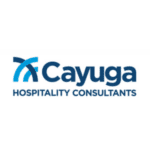 Summer is here, and traveler confidence is starting to approach its pre-COVID-19 levels. The next big step is a proper return to form for international travel, but the problem hotels face is ensuring they are conveying ‘trust’ on the websites where guests are booking – namely, the OTAs. So, how does a hotel project this trust?
Summer is here, and traveler confidence is starting to approach its pre-COVID-19 levels. The next big step is a proper return to form for international travel, but the problem hotels face is ensuring they are conveying ‘trust’ on the websites where guests are booking – namely, the OTAs. So, how does a hotel project this trust?
Besides a deft hand from your revenue managers to yield rates, trust is built through the content that adjoins any hotel rate displayed on a third-party website. For clarity, we’re referring to all the non-sellable attributes that accompany a hotel’s nightly rate and address including text descriptions, images, amenities, cancellation policies, COVID-19 safety procedures, onsite service availability and so on – practically everything that influences bookings besides the price.
To understand why content is a leading determinant for hotel selections in this post-pandemic environment, we have to first look at how dramatically customer behavior and hotel operations have changed since March 2020. For this, we sat down with a content distribution expert, Andreas Posmeck, the CEO of GIATA (www.giata.com – an automated content distribution platform), who shed some light on the forces that will drive revenues from international arrivals in the next few business cycles.
Traveler hesitancy is the current obstacle
Even though the pandemic may be waning, guests still have lingering uncertainty and confusion, particularly when it comes to venturing abroad. While people still yearn to travel like it’s 2019, they have cautiously retreated to their most-trusted accommodation sources – ones that show booking flexibility, good deals, packages, clearly stated Covid safety measures and a variety of lodging options.
In many cases, this ‘retreat’ to the most-trusted source puts the OTAs back at the forefront. For certain territories, however, this could also include credible tour operators or wholesalers, especially those that display listings in a customer’s native language. That is, while indeed many around the world understand and speak basic English, such customers may prefer, and be more emotionally moved towards booking, if hotel descriptions are presented in their native language.
In tandem with the need for better visibility on all hotel distribution channels – whether your revenue manager works directly with a channel or not – there are also the prospective guests you see and the ones you don’t. For example, how do you know your hotel does or doesn’t appeal to guests from certain countries if you don’t already have good reach within that territory?
Complementary to this line of tree-falling-in-the-woods questioning, how would you correctly transliterate (not just translate) content to instill proper language flow and tense structure? Hiring a translator who also specializes in hospitality may be highly uneconomical given that there isn’t a lot of reliable historical data to justify such expenses, especially when such personnel would have to be recruited on an ongoing basis to execute all the little and constant content updates.
Now compound this issue to comprise the rest of the globe. Beyond translation services, how will you ensure that your content has the right style and syntax in channels catering to the locally preferred channels for French, German, Russian, Spanish, Italian, Dutch, Turkish, Arabic and Portuguese speakers? Your team, as lean as it must be to stay profitable, doesn’t have time to update all the various local travel distribution channels in English, let alone any other language.
As we’ve previously touched upon, speaking to a local in their native tongue is a great way to gain an edge for the competition. As a final thought for domestic revenue building, consider that United States residents with a Hispanic background still prefer to book accommodations within the US on Spanish-text websites over English-text ones; a host hotel’s ability to properly command this language can hence present a lucrative domestic recovery opportunity.
Too busy for this problem
Our worry is that at the present moment hoteliers are too busy staffing up and dealing with summer peak season to consider building a diversity of origin market revenues. This is especially true for when you factor in different preferences for each country and high-margin versus low-margin distributors as well as those channels you don’t work directly with for foreign language mistranslations and missing connections that can jumble the way content is displayed.
Automating all that content distribution to thousands of multinational distribution channels is the only way to stay above water, lest you miss out on any of these tiered travel surges. You need to be as nimble as possible with your tech stack in the decade ahead. In this sense, the best course is to set up the right software now so that your hotel is top on any OTA in any market, whether you’re actively advertising there or not. Above all, technology is your best friend for the decade ahead, with platforms like GIATA, as Posmeck closed out our chat, “Nurturing good roots so that future forests can grow.”































